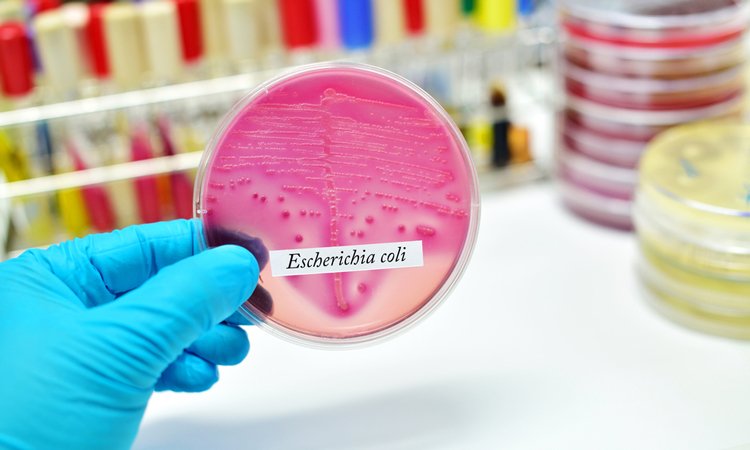Novel antibiotic compound revealed through artificial intelligence screening
Posted: 24 February 2020 | Victoria Rees (Drug Target Review) | No comments yet
A new antibiotic compound has been identified by researchers who designed a machine-learning algorithm to screen millions of molecules.


Researchers have identified a promising new antibiotic compound using a machine-learning algorithm. According to the scientists, in laboratory tests, the drug killed many disease-causing bacteria, including some strains that are resistant to all known antibiotics. It also cleared infections in two different mouse models.
Created by researchers at MIT, US, the computer model was designed to screen more than a hundred million chemical compounds in a matter of days and reveal potential antibiotics that use different mechanisms than those of existing drugs.
…halicin kills bacteria by disrupting their ability to maintain an electrochemical gradient across their cell membranes”
“We wanted to develop a platform that would allow us to harness the power of artificial intelligence (AI) to usher in a new age of antibiotic drug discovery,” said senior author Professor James Collins at MIT’s Institute for Medical Engineering and Science (IMES) and Department of Biological Engineering. “Our approach revealed this amazing molecule which is arguably one of the more powerful antibiotics that has been discovered.”
The researchers designed their model to look for chemical features that make molecules effective at killing E. coli. To do so, they trained the model on about 2,500 molecules, including about 1,700 US Food and Drug Administration (FDA)-approved drugs and a set of 800 natural products with diverse structures and a wide range of bioactivities.
Once the model was trained, the team tested it on the Broad Institute’s Drug Repurposing Hub, a library of about 6,000 compounds. The model selected one molecule that was predicted to have strong antibacterial activity and had a different chemical structure from any existing antibiotics. Using another machine-learning model, the researchers also showed that this molecule would likely have low toxicity to human cells.
This molecule, which the researchers decided to call halicin, has been previously investigated as possible diabetes drug. The researchers tested it against dozens of bacterial strains isolated from patients and grown in lab dishes and found that it was able to kill many that are resistant to treatment, including Clostridium difficile, Acinetobacter baumannii, and Mycobacterium tuberculosis. The drug worked against every species that they tested, with the exception of Pseudomonas aeruginosa, a difficult-to-treat lung pathogen.
To test halicin’s effectiveness in living animals, the researchers used it to treat mice infected with A. baumannii. The strain that they used is resistant to all known antibiotics, but application of a halicin-containing ointment completely cleared the infections within 24 hours.
The antibiotic mechanism of action
Preliminary studies from the researchers suggest that halicin kills bacteria by disrupting their ability to maintain an electrochemical gradient across their cell membranes. This gradient is necessary, among other functions, to produce ATP (molecules that cells use to store energy), so if the gradient breaks down, the cells die. This type of killing mechanism could be difficult for bacteria to develop resistance to, the researchers say.
…the computer model was designed to screen more than a hundred million chemical compounds in a matter of days”
“When you’re dealing with a molecule that likely associates with membrane components, a cell can’t necessarily acquire a single mutation or a couple of mutations to change the chemistry of the outer membrane. Mutations like that tend to be far more complex to acquire evolutionarily,” said first author Jonathan Stokes, a postdoc at MIT.
The researchers found that E. coli did not develop any resistance to halicin during a 30-day treatment period. In contrast, the bacteria started to develop resistance to the antibiotic ciprofloxacin within one to three days and after 30 days, the bacteria were about 200 times more resistant to ciprofloxacin than they were at the beginning of the experiment. According to the scientists, their next step is to develop halicin for use in humans.
Further research
After identifying halicin, the researchers also used their model to screen more than 100 million molecules selected from the ZINC15 database, an online collection of about 1.5 billion chemical compounds. This screen, which took only three days, identified 23 candidates that were structurally dissimilar from existing antibiotics and predicted to be non-toxic to human cells.
In laboratory tests against five species of bacteria, the researchers found that eight of the molecules showed antibacterial activity and two were particularly powerful. They now plan to test these molecules further and also to screen more of the ZINC15 database.
The researchers concluded that they plan to use their model for the design of new antibiotics and to optimise existing molecules. Their paper appears in Cell.
Related topics
Antibiotics, Artificial Intelligence, Drug Targets, Informatics, Research & Development, Screening
Related organisations
MIT
Related people
James Collins, Jonathan Stokes



